HMS Audacity (1941)
 United Kingdom, escort aircraft carrier (1939-1962)
United Kingdom, escort aircraft carrier (1939-1962)
WW1/WW2 RN Aircraft Carriers:
ww1 seaplane carriers | Ark royal (1914) | Campania | Furious | Argus | Hermes | Eagle | Courageous class | Ark Royal (1936) | Illustrious class | Implacable class | Colossus class | Majestic class | Centaur class | Unicorn | Audacity | Archer | Avenger class | Attacker class | HMS Activity | HMS Pretoria Castle | Ameer class | Merchant Aircraft Carriers | Vindex classHMS Archer was a Long Island-class escort carrier based on a C3 cargo, MV Mormacland, converted and used under lend lease by the Royal Navy in WW2 as HMS Archer. Her was plagues by transmission issues and eventually this caused her to be withdrawn from front-line service. She became a stores ship and accommodation ship, underwent a refit and subsequent and was converted back to a merchant aircraft ferry ship, Empire Lagan. Back to the US Navy, she was sold into merchant service, converted as the passenger ship, Anna Salén, carrying emigrants to Australia and Canada, resold as Tasmania, converted back later to a cargo ship as Union Reliance and scrapped in the US after a collision and fire in 1961.
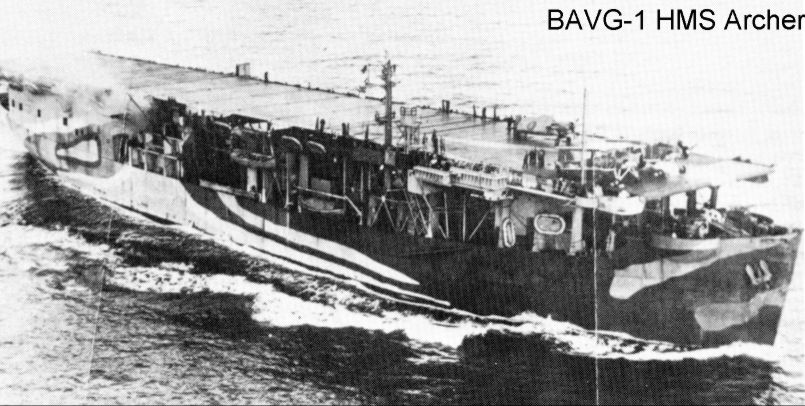
Conversion History
MV Mormacland was laid down as a Type C3 cargo ship, on 1 August 1939, ordered by the United States Maritime Commission under MC Hull 46 at the Sun Shipbuilding and Drydock Company in Chester, Pennsylvania in Yard number 184. She was launched on 14 December 1939, completed on 24 April 1940. As MV Mormacland she was classed as 7,889 GRT. Soon she was operated by Moore-McCormack Lines Inc. based in New York, until 6 March 1941. By then, she was requisitioned by the United States Navy, sent to Newport News Shipbuilding & Drydock Co. in Virginia, for conversion to an aircraft carrier part of the “Long Island class”.
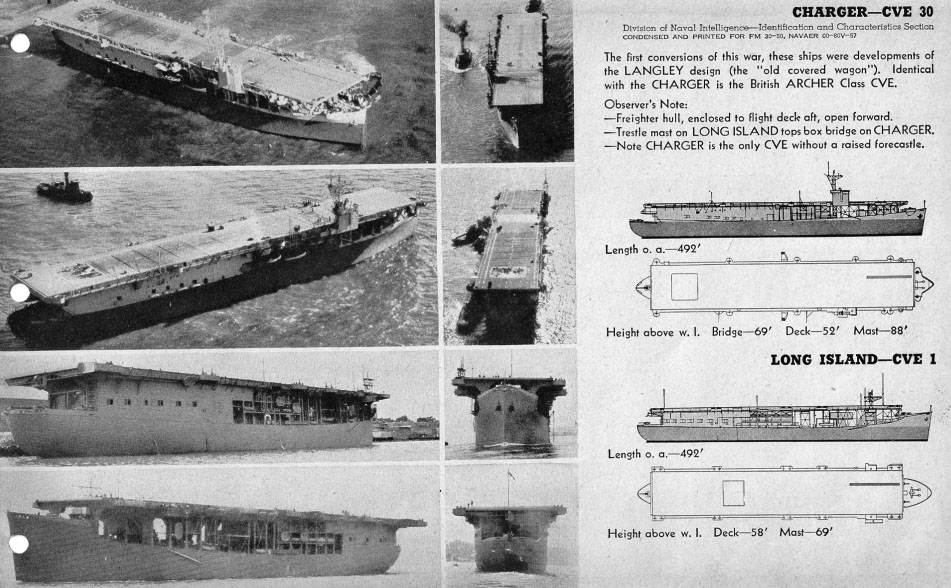
ONI depiction of USS Long Island and Charger, the first US escort carriers
In reality she was closer to USS Long island than the latter USS Charger (CVE-1, CVE-30) her conversion design was less advanced, quicker, resulting in a rather small air group. When requisitioned by the US Navy she was designated BAVG-1, as the first hull to be delivered to the Royal Navy under lend-lease, and eventually commissioned into the Royal Navy on 17 November 1941. She then left Newport News for Britain and start her service as the US were already at war and needed more C3 hulls to be converted as escort carriers to protect their own part of the Atlantic. In any case, HMS Archer became the only Long Island-class escort carrier of the Royal Navy. Her next class acquisitions were way better C3 cargo conversions based on the USS Charger instead, the Avenger/Ameer notably.
Conversion Design
Hull and general design
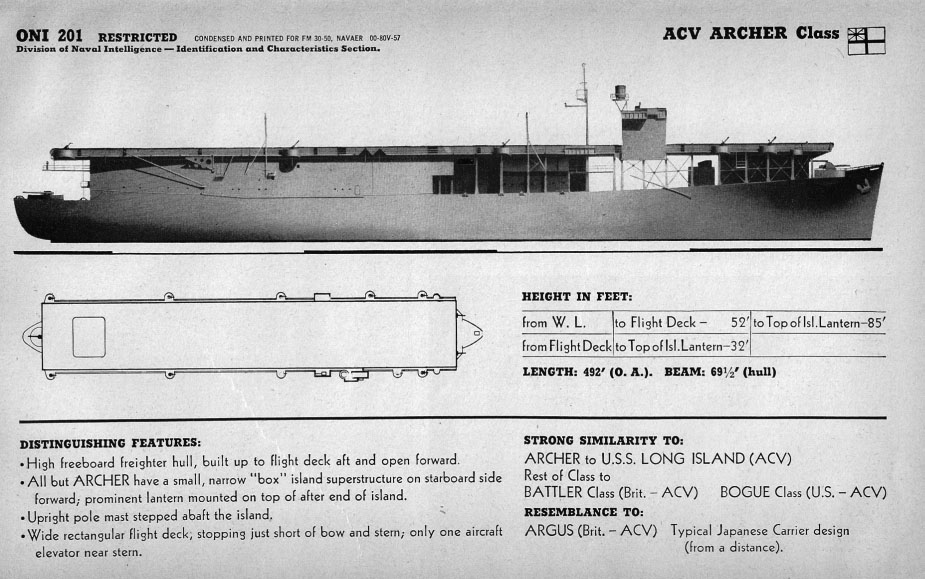
ONI depiction of the “archer class”. In reality she lacked the island and she had a half hangar.
HMS Archer received a lightweight wooden flight deck built over a truss frame which was added on top of her original weather deck on over 70% of her length, which was modest and made for a short, but wide flight deck. It was at least serviced by a single lift aft, where was the hangar, even shorter at less than 50% pf her lenght. This was really a “quick” conversion, and yet still completed on 15 November 1941 when she was transferred, so after eight months.
Archer was a true sister of USS Long Island, without island structure, an original bridge retained and extended on both sides to provide visibility, a funnel replaced by twin diesel vents on either beam close to the flight deck. Her bggest handicap was her powerplant, different than USS Long Island. These Busch-Sulzer engines sometimes produced a lot of black smoke which precluded landings as pilots just could not see the batman or even in some case, the flight deck. Captains always trie to turn the ship in a way the wind jelped the pilots to land, and it was not always compatible with the way the smoke went.
HMS Archer displaced 8,200 long tons (8,332 t) at normal load, 9,000 long tons (9,144 t) at deep load. She measured 492.25 feet (150.04 m) overall, for a beam of 66.25 feet (20.19 m) and height of 23.25 ft (7.09 m). See below for her flight deck. She had a high prow wirth bulwarks wella dapated to the north Atlantic and she was seaworthy, but as all single prop cargoes she had no redundancy.
She carried as a carrier a complement of 555 men, partly civilian with RN officers and gunnery crew, FAA personel and pilots.
Powerplant
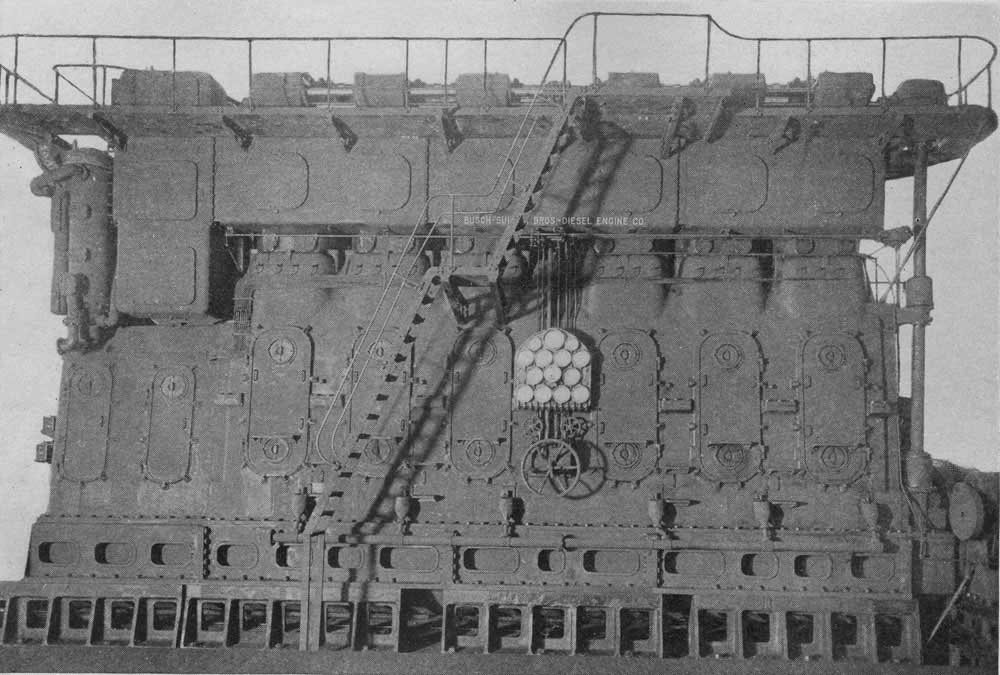
As an Atlantic capable cargo she was designed already to evade U-Bootes and counted on four 2,225 bhp (1,659 kW) 7-cylinder 2-stroke single-acting diesel engines coupled on a single shaft propeller via Westinghouse electro-magnetic slip couplings plus Falk single reduction gears. This was pretty innovative at the time, but also untested. These engines were provided by Busch-Sulzer Bros. Diesel Engine Company in St Louis, Missouri. They were massive, with 20½ inches (52 cm) bore and 27 inches (69 cm) stroke and provided 2,060 horsepower (1,540 kW) each for a grand total of 8,250 shp. The same propulsion system ended on four sister ships for Sun Shipbuilding: MV Mormacpenn, Mormacyork, Mormacland and Mormacmail, all converted.
This arrangement could propel her at 16.5 knots (30.6 km/h; 19.0 mph), whereas U-Boats Type VII at the time could maintain surfaced at 17 knots.
The range is no known, but after conversion as escort carrier, she reached 14,550 nautical miles (26,950 km) at 10 knots (19 km/h).
Armament
As completed she received US weapons: Three main 4-inches 50 caliber Mark 9 standard of the USN (102 mm), single mounted dual purpose, with one aft of the ship on the poop deck, in an enclosure. The arc of fire was about 180° aft, but marred by the high overhanging deck. There were two more located at the prow in tandem, again with an arc of fire blocked by the overhanging forward deck.
The complement was fifteen 20mm/70 Oerlikon Mk 1.2 AA guns and six 12.7mm/90 Browning M2 heavy machine gun. The location of the 20 mm is known, they were placed by pairs in ten sponsoned platforms, five per side, high enough for cross fire over the deck. The were supposed to be on single or twin mounts. It’s likely they had only single ones as delivered, and it was augmented later.
In 1942 her original 102mm/50 US guns were replaced by 102mm/45 (4-inches) QF Mk V. In March 1943 one single 20mm/70, and the six 50 cal. HMG were removed, two twin 40mm/56 Bofors Mk 1.2 added.
In October 1943, she lost three more single Oerlikon replaced by four twin Mk 1.2 mounts of the same. This was her last upgrade.
Sensors
By default of a true island and bridge, there was a mast identical to the one on USS Long Island, supporting both a type 79B main warning radar and a type 271 radar to guide the fire of the three main AA guns fore and aft on a supporting extension platform. As completed she had the radars, but they were replaced in March 1942 by the type 273, type 291 radars kept until the end of the war.
Aircraft Facilities and Air Group
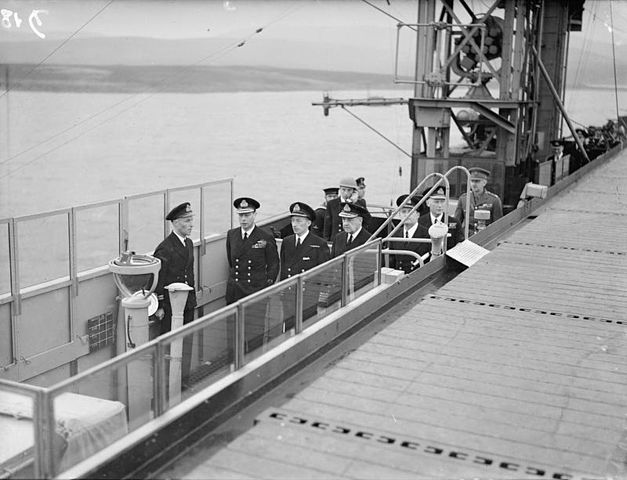
HMS Archer inspected by the King 18-21 March 1943
Facilities
Aircraft facilities comprised the rectangular deck, 133.5 x 23.7m (436 x 77 foot) for 3,164 m² (34,000 Sq ft) and a hangar aft, about 40% of the ship’s lenght (real space even further reduced by the location of the hangar). It measured 57.9 x 14.3 x 5.79m (190 x 47 x 19 ft.) for 1,275m² (13,700 sq ft) of surface and a volume of 7,382m³ (26,000 cu ft). The rest of the added structure housed the pilots, personal, and a workshop. It’s unknown how much the below deck holds were used. I have bno information of they were stored with cargo payload, as the ship was not exploited for transport, not supposed to carry any good.
There was a combined bridge–flight control on the starboard side, sponsoned. The main aircraft lift was forward of the hangar and measured 43 by 34 feet (13 by 10 m). There was a single port side aircraft catapult H-II (3.2t plane launched at 113 km/h), and nine arrestor wires aft. The Long Island and Archer’s “half hangar” was a provisional test, but their air group was quite minimal. She carried 398,000l for aviation fuel stowage, reduced after commissioning to 164,000l.
Air Group
She had the capacity for fifteen aircraft, a mixture of Grumman Martlet/Hawker Sea Hurricane fighters completed by a range of Fairey Swordfish and later in the war allegedly she operated Tarpon Mark I (Grumman Avenger) used for ASW. No doubt the massive Avenger would not be at ease landing on the flight deck.
Sources diverges about the composition, which changed over time. Navypedia states this varied for all her career between 3 and 12 Martlet and 3 to 8 Swordfish. Towards 1943 ratios were inverted between fighters and bombers: 4 Wildcat and 8 Swordfish, only 12 planes. In general the Martlet provided fast recce to spot U-Boats around the convoy and vectored ASW grenades equipped Swordfishes.
It seems she never operated the Sea Hurricane or Avenger.
⚙ specifications |
|
| Displacement | 9,000 long tons (9,100 t) standard, 15,700 long tons (16,000 t) full load |
| Dimensions | 461 ft 1 in x 69 ft 7 in x 29 ft 1 in (140.54 x 21.21 x 8.86 m) |
| Propulsion | 1 shaft, 4× 7-cyl. SCSA diesel 2,060 hp (1,540 kW) each |
| Speed | 16.5 knots (30.6 km/h; 19.0 mph) |
| Range | 14,550 nmi (26,950 km; 16,740 mi) at 10 knots (19 km/h; 12 mph) |
| Armament | 3× 4 in/50 DP, 15× 20mm Oerlikon AA, 6x cal.05 Browning AA, see notes |
| Protection | None, some compartimentation |
| Air Group | 15, see notes |
| Crew | 555 |
Career of HMS Archer: Bad luck and problems

Two days after completed conersion as BAVG-1, she was transferred and recommissioned with the Royal Navy as HMS Archer, the first lend-lease escort carrier of the British Navy. On 23 December 1941, three US Navy Grumman F4F Wildcats landed for trials and test a launch accelerator, which misfired, causing the first to dive into the sea. The remaining two were a success. Later she would be provided a bunch pof land-lease Martlet (The Britisg FAA name of the Wildcat). HMS Archer left for good the Philadelphia Naval Shipyard on 24 December 1941 and her accelerator was repaired. On 2 January 1942, her sea trials were completed. On 9 January she sailed down the Delaware River for Norfolk to load aircraft. Her gyro compass however failed near Goose Island and the engineering team reported issues with her diesels. She was repaired again at Norfolk and on 12 January receiving eleven Martlet Mark 1.
She departed Norfolk on 13 January until both her steering and gyro compass failed. She had to be repaired back, and the headed for for Kingston, Jamaica, but while underway at night she had a collision with the 4,497 GRT U.S. freighter Brazos. It happened some 200 nautical miles (370 km; 230 mi) east of Charleston. Her bow was mushed and she had numerous leaks and flooding, so she settled down at the bow by 5 degrees. Eventually the flooding was contained but she remained dead in the water, an ideal target for U-Boats passing by. Brazos’s crew was transferred to Archer in their own lifeboats as the latter was so damaged (she wa srammed) that she sank the following day, 14 January. Archer’s captain called for assistance and the team managed to restart the engine so that she could proceed to the coast, but still listing, her propeller was half out of the water… So speed was quite slow. On 16 January at least she sighted US Coast Guard tug Tallapoosa, which failed to tow her.

She went on on her own until a larger tug, USCG Cherokee, managed to tow her on 17 January, and she arrived at Charleston on 21 January, entered the dry dock on the 28th for repairs over six weeks.
That was quite a bad start. On 7 March 1942, she was loaded with twelve additional Martlets on deck to be for delivered to HMS Illustrious plus four Fairey Swordfish (834 Squadron). The latter flown out from Jamaica.
At last she departed on 18 March for San Juan in Puerto Rico with HMS Devonshire and two destroyers: This was her first mission, escorting Convoy AS 2. On 22 March her steering gear problem forced her to leav the convoy and head for San Juan on 23 March, but she was back on 24 March. She had one Swordfish badly damaged on 30 March, loosing its tailhook, and ending in the safety barrier. All this time until reaching the African coast, the engineers complained about constant engines and gyro compass issues. She made it into Freetown, Sierra Leone, on 3 April. On the 9th she delivered her 12 Martlets to Illustrious while the latter transferred two Martlets in exchange.
On 15 June 1942, she had one Swordfish landing on Ascension Island, it was a world’s first. The crew tried to locate survivors from SS Lyle Park, sunk by U-752.
Archer was constantly reporting powerplant problems. The electro-magnetic clutches constantly failed, disengaging the engines, which went to high revolutions and a high level of noise and vibrations. They had to be shut down to repair the clutches each time. On 26 June, she sailed from Freetown to Bermuda for more repairs. It started on 15 July and extended over 14 weeks. Then she departed for New York City, joining Convoy UGS 2, sailing from 2 November for Casablanca and Operation Torch with 30 Curtiss P-40 Warhawks packed on her deck, pilots and personal to Casablanca. After this she joined convoy MKF 3 in Gibraltar and sailed out on 27 November to the UK for the first time, and sent to Liverpool for more repairs from 4 December. Her flight deck was lengthened and she received radar upgrades and AA alterations.

On 19 February 1943, she carried nine Martlet Vs (892 Squadron) and from 28 February, nine Swordfish Mk II (819 Squadron) when inspected by King George VI on the 29th. She returned for more work in the Clyde and Belfast. In May she joined the 4th Escort Group off Iceland and Convoy ONS 6 (9 May), Convoy ON 182 (12 May), Convoy HX 239 (21) but on the 23rh a Swordfish spotted and sank U-752 with a Rocket Spear. 13 survivors were rescued by HMS Escapade. U-752 became the first U-boat sunk with rockets and second sunk by any escort aircraft carrier. She was detached from Convoy HX 239 on 24 May to join Convoy KMS 18B, on 26 June until 3 July. She left the 4th Escort Group for an exercise in the Irish Sea and started ASW patrols in the Bay of Biscay, where Bordeaux and Lorient baes U-Boats and Italians subs transited. However engine defects plagued her service and she was sent back to Devonport on 27 July for repairs, completed at the Clyde from 3 August.
She was decommissioned after many months of hard work, from 6 November 1943. Engineers concluded her powerplant was to be either replaced entirely, or managed in a way not to cause more troubles. The latter was chosen as the RN had largely eniough escort carriers at this point (37 more US-built converted C3 Escort Carriers had been delivered). HMS Archer thus became a statonary store ship at Gare Loch. In March 1944 she was towed to Loch Alsh and became an accommodation ship until August.
Back as a cargo and postwar civilian career
Sent in Belfast she was converted as an aircraft ferry ship over 7.5 months. When completed by 15 March 1945, she was retransferred to the Ministry of War Transport, renamed Empire Lagan. She kept her dfeck only to ferry aircraft from the US to UK. Before the war ended, she was reconverted to a cargo ship and worked under Blue Funnel Line, then A Holt & Co. under the name Empire Lagan from London. She took part in US in Convoy UC 69 departing Liverpool on 24 May 1945 to New York on 3 June 1945. She was then discgharged and to be given back to the USN, sailing to Norfolk, Virginia.By 9 January 1946 Empire Lagan was renamed for pure administrative reasons USS Archer. She was promtly stricken, on 26 February, laid up at Norfolk pending her sell, which happened on 30 September 1947 to Mr J F Luley in New York.
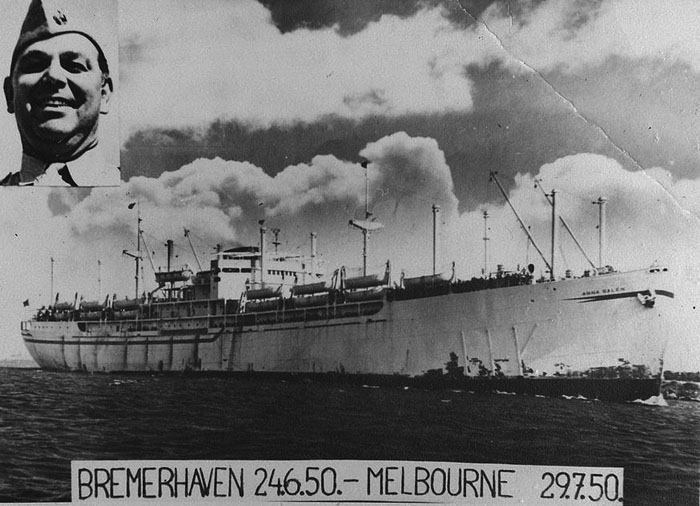
She became Anna Salén when resold in 1948 Archer to Swedish businessman Sven Salén for Rederi Pulp AB, based in Stockholm. She started as a bulk carrier, reconverted at Bethlehem Shipyard, shipping coal from the US to Italy. Next she was contracted by the International Refugee Organisation to to sail refugee from Europe to Australia-Canada. In Italy she was converted to a passenger ship (basic accommodation in cargo holds), superstructure extended to the stern, capacity 1500 passengers, single class, 11,672 GRT. She departed in June 1949 Naples to Melbourne and Sydney. By December her troublesome gine of course broke down in the Indian Ocean and she was admitted to Aden, disembarking her passengers. After repairs she made two voyages from Bremerhaven to Australia. This went on until the mid-1950s, with stops in Saigon. On 13 August 1952, Anna Salén collided with the Norwegian whaler SS Thorshovdi (18,369 GRT) in the Pentland Firth. After another voyage from Europe she was sold in 1955 to a Greek buyer, renamed Tasmania under the Compagnia Navigazione Tasmania SA in Piraeus, Hellenic Mediterranean Lines used between French ports and Australia. Sghe was rebuilkt again as a cargo ship, 7,638 GRT and was sold to a Taiwanese buyer in 1961, China Union Lines of Taipei and renamed Union Reliance.
She sailed from Taipei and the US. However on 7 November 1961, she collided with the 9,003 GRT Norwegian tanker MV Berea in the Houston Ship Channel. She caught fire, ran aground, with 12 killed aboard. She was abandoned by her owners, her wreck removed by US port authorities on 9 November, towed to Galveston in Texas, her case enfing in court as the Chinese company refuse to pay. She was sold off on auction to pay off costs at US$109,100 for scrap, at New Orleans in March 1962.
Read More/Src
Books
Cocker, Maurice (2008). Aircraft-Carrying Ships of the Royal Navy. Stroud, Gloucestershire: The History Press.
Tillman, Barrett (1998). SBD Dauntless Units of World War 2, Issue 10 of Osprey Combat Aircraft. Oxford: Osprey Publishing.
Poolman, Kenneth (1972). Escort Carrier 1941–1945. London: Ian Allan.
“Moore-McCormack, Mormacland”. Moore-McCormack. Archived from the original on 13 August 2021.
Links
royalnavyresearcharchive.org.uk
navsource.org/
uboat.net/
en.wikipedia.org/ HMS_Archer_(D78)

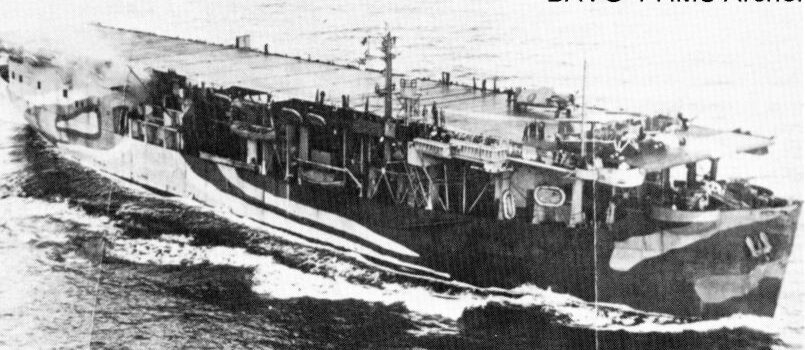
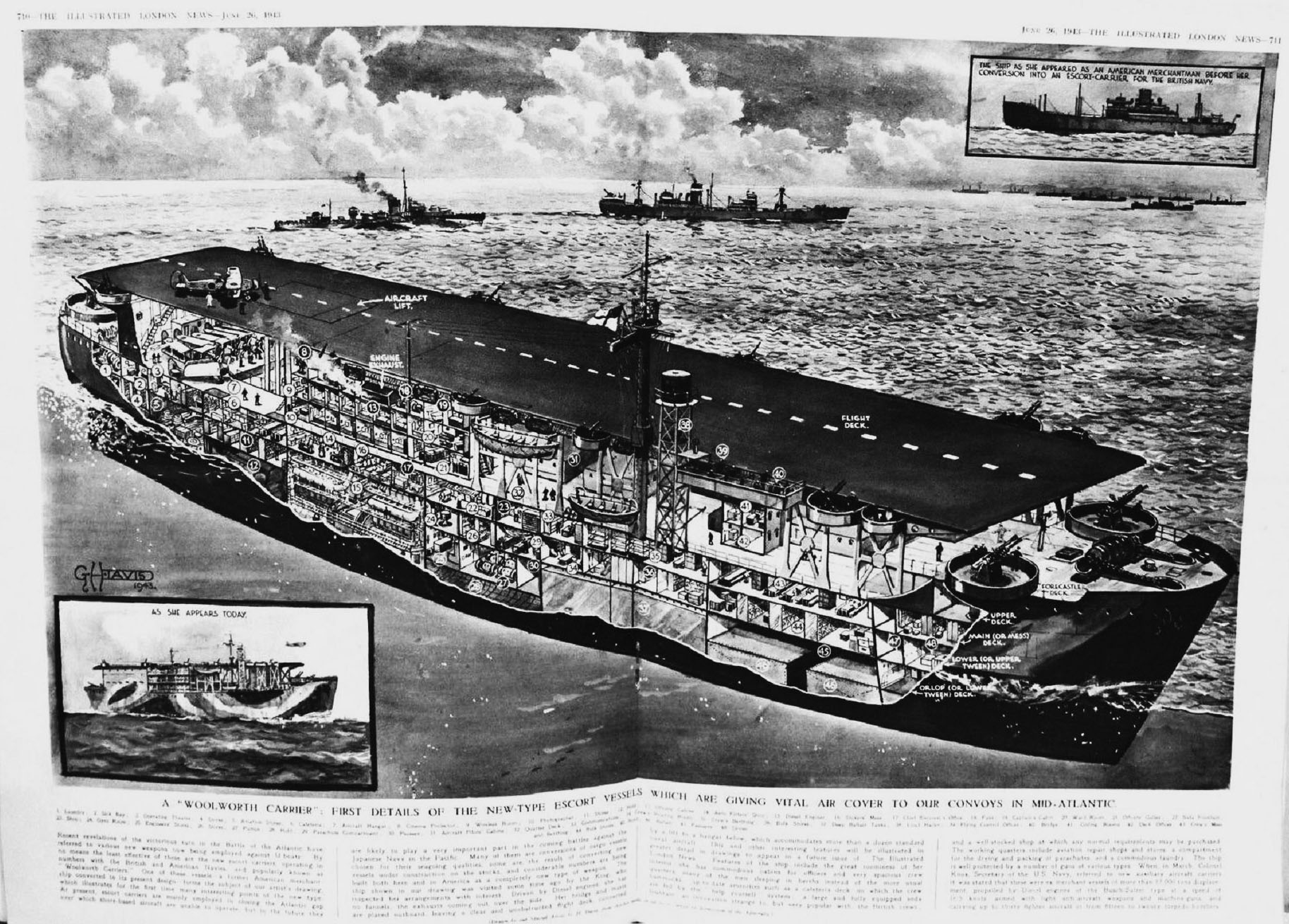
 Latest Facebook Entry -
Latest Facebook Entry -  X(Tweeter) Naval Encyclopedia's deck archive
X(Tweeter) Naval Encyclopedia's deck archive Instagram (@navalencyc)
Instagram (@navalencyc)





 French Navy
French Navy Royal Navy
Royal Navy Russian Navy
Russian Navy Armada Espanola
Armada Espanola Austrian Navy
Austrian Navy K.u.K. Kriegsmarine
K.u.K. Kriegsmarine Dansk Marine
Dansk Marine Nautiko Hellenon
Nautiko Hellenon Koninklije Marine 1870
Koninklije Marine 1870 Marinha do Brasil
Marinha do Brasil Osmanlı Donanması
Osmanlı Donanması Marina Do Peru
Marina Do Peru Marinha do Portugal
Marinha do Portugal Regia Marina 1870
Regia Marina 1870 Nihhon Kaigun 1870
Nihhon Kaigun 1870 Preußische Marine 1870
Preußische Marine 1870 Russkiy Flot 1870
Russkiy Flot 1870 Svenska marinen
Svenska marinen Søværnet
Søværnet Union Navy
Union Navy Confederate Navy
Confederate Navy Armada de Argentina
Armada de Argentina Imperial Chinese Navy
Imperial Chinese Navy Marinha do Portugal
Marinha do Portugal Mexico
Mexico Kaiserliche Marine
Kaiserliche Marine 1898 US Navy
1898 US Navy Sovietskiy Flot
Sovietskiy Flot Royal Canadian Navy
Royal Canadian Navy Royal Australian Navy
Royal Australian Navy RNZN Fleet
RNZN Fleet Chinese Navy 1937
Chinese Navy 1937 Kriegsmarine
Kriegsmarine Chilean Navy
Chilean Navy Danish Navy
Danish Navy Finnish Navy
Finnish Navy Hellenic Navy
Hellenic Navy Polish Navy
Polish Navy Romanian Navy
Romanian Navy Turkish Navy
Turkish Navy Royal Yugoslav Navy
Royal Yugoslav Navy Royal Thai Navy
Royal Thai Navy Minor Navies
Minor Navies Albania
Albania Austria
Austria Belgium
Belgium Columbia
Columbia Costa Rica
Costa Rica Cuba
Cuba Czechoslovakia
Czechoslovakia Dominican Republic
Dominican Republic Haiti
Haiti Hungary
Hungary Honduras
Honduras Estonia
Estonia Iceland
Iceland Eire
Eire Equador
Equador Iran
Iran Iraq
Iraq Latvia
Latvia Liberia
Liberia Lithuania
Lithuania Mandchukuo
Mandchukuo Morocco
Morocco Nicaragua
Nicaragua Persia
Persia San Salvador
San Salvador Sarawak
Sarawak Uruguay
Uruguay Venezuela
Venezuela Zanzibar
Zanzibar Warsaw Pact Navies
Warsaw Pact Navies Bulgaria
Bulgaria Hungary
Hungary

 Bundesmarine
Bundesmarine Dutch Navy
Dutch Navy Hellenic Navy
Hellenic Navy Marina Militare
Marina Militare Yugoslav Navy
Yugoslav Navy Chinese Navy
Chinese Navy Indian Navy
Indian Navy Indonesian Navy
Indonesian Navy JMSDF
JMSDF North Korean Navy
North Korean Navy Pakistani Navy
Pakistani Navy Philippines Navy
Philippines Navy ROKN
ROKN Rep. of Singapore Navy
Rep. of Singapore Navy Taiwanese Navy
Taiwanese Navy IDF Navy
IDF Navy Saudi Navy
Saudi Navy Royal New Zealand Navy
Royal New Zealand Navy Egyptian Navy
Egyptian Navy South African Navy
South African Navy






























 Ukrainian Navy
Ukrainian Navy dbodesign
dbodesign